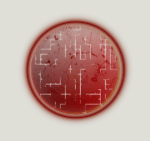“There are decades where nothing happens; and there are weeks where decades happen.”
Vladimir Ilyich Lenin
Living in the world of crypto is almost always eventful, but some times are more eventful than others.
Kraken Settles SEC Charges that Staking Program Is a Security under Howey
Crypto exchange Kraken has agreed to settle charges by the SEC alleging it conducted an unregistered offer and sale of securities through its crypto asset staking program. To settle the charges, Kraken agreed to immediately cease offering its staking program and pay a combined $30 million in disgorgement, prejudgment interest, and civil penalties.
Kraken’s staking-as-a-service program allowed investors to commit their crypto assets to Kraken, in return for payment of a discretionary return (referred to as a “reward” by Kraken) on committed assets. Kraken pooled these crypto assets together and staked the assets in an attempt to be selected as a transaction validator on various blockchains. Validators have a better chance of being selected the larger the amount of their staked crypto assets. If selected to validate a transaction, Kraken received a staking reward, typically in the form of the native token of the blockchain, which it then used, in part, to pay returns to the investors that committed their crypto assets.
Kraken is the latest in a recent string of SEC enforcement actions focused on unregistered offerings by crypto exchanges (see Genesis and Gemini and Nexo Capital). The SEC’s complaint follows the same narrative used in those enforcement actions. Under the Howey framework, the SEC argued that Kraken’s staking-as-a-service program is an investment contract because it involves an investment of money, in a common enterprise, where there was a reasonable expectation of profits, based upon the efforts of Kraken. Note that the Kraken enforcement action is against staking-as-a-service as opposed to staking. There is, as yet, no indication that the SEC believes staking to involve an investment contract, and we believe there are good reasons why it is unlikely to do so.
OCC Launches Operation Chokepoint 2.0?
A decade ago, a cross-agency effort between the Department of Justice and the federal banking regulators known as “Operation Chokepoint” attempted to “choke out” companies the Administration considered a “high risk” or otherwise objectionable, despite the fact that they are legal businesses. Through Operation Chokepoint, regulators exerted pressure on banks to terminate relationships with a wide variety of bank customers, initially in the payday lending industry. Targeted customers included many entirely lawful and legitimate merchants.
Current actions and pronouncements by the FDIC, the Fed and the OCC, and subsequent actions by a number of banks, have led some in the crypto industry to suspect that the industry is currently experiencing “Chokepoint 2.0” aimed at de-banking the entire crypto industry.
In truth, rumors about operation Chokepoint 2.0 have been circulating for a while and banking regulators in the current administration have made no secret of their concern about cryptocurrency. There are no confirmations that Chokepoint 2.0 aimed at the crypto industry is in fact underway, but there certainly is enough smoke in the air to make many wonder.
DFS Directs Paxos To Stop Minting BUSD
The Wall Street Journal reports that the SEC has issued a Wells notice to crypto exchange Paxos alleging that its offering of BUSD, a Binance-branded stablecoin issued by Paxos, is a security. Just after the report broke, Paxos, a New York chartered trust company, announced that it will stop minting new BUSD at the direction of the New York Department of Financial Services.
LEGAL TOKENS
It may be a coincidence that so many regulators are taking very close looks at anything crypto-related. No doubt the events of 2022 (Terra/Luna, 3AC, Celsius, Voyager, FTX) have something to do with the timing. Will these efforts be enough to finally drive a stake through the cause of cryptocurrency in the U.S.? Not likely—but for the first time, the specter of that possibility is hovering in the room.




